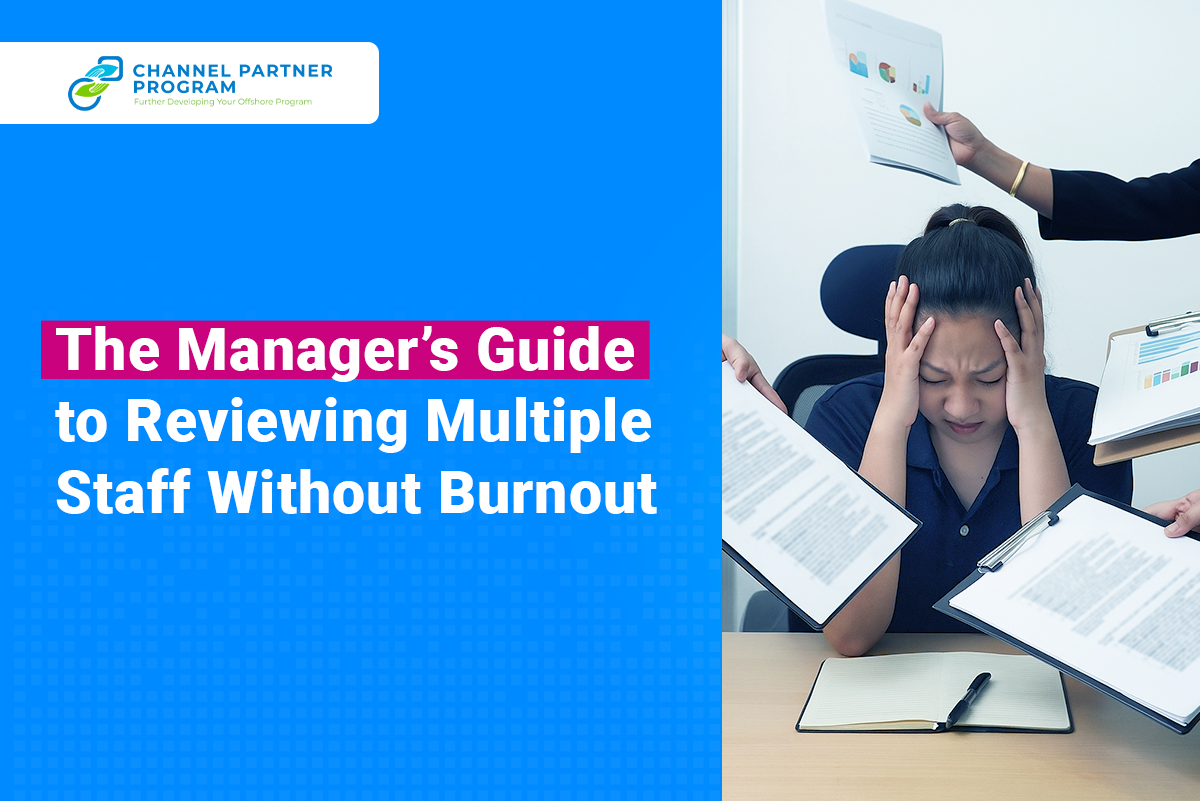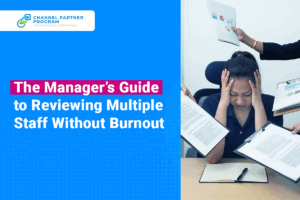Performance reviews are essential, but let’s be honest: when you’re managing several team members, especially when spread across time zones, it can quickly feel overwhelming. You want to give everyone thoughtful, personalized feedback, but with limited time and competing priorities, the process can turn into a rushed, check-the-box activity.
The good news? It doesn’t have to be that way.
In this guide, we’ll walk you through how to structure your review process so it’s efficient, fair, and effective – without burning you out in the process.
1. Systematize the Review Process
Burnout often starts with disorganization. Without a clear system, reviews can feel never-ending and emotionally taxing. The solution? Create structure.
Use consistent templates across all teams to reduce admin time and ensure fairness.
Set clear timelines for review cycles, manager submissions, and employee self-evaluations.
Automate where possible—performance management tools can save hours.
📌 Tip: Standardization doesn’t make reviews less personal—it ensures they’re consistently delivered and easier to manage at scale.
2. Use a Consistent Framework Across the Board
Having a structure helps keep reviews fair and focused. Stick to a few key areas like:
• Goals and achievements
• Skills and behaviors
• Challenges and support needed
• Next steps and development goals
This keeps you from overthinking each one and helps employees know what to expect.
3. Prioritize High-Impact Conversations
Not all reviews need to be high-stakes. Prioritize deep, developmental conversations for high performers, struggling employees, or those moving into new roles.
For others, a concise check-in with clear recognition and a few forward-looking suggestions may be more than enough.
📌 Remember: Quality > quantity. Not every review has to be a full debrief—especially when touchpoints happen regularly throughout the year.
4. Document Lightly but Smartly
Over-documentation can be just as draining as under-documentation is risky. Use tools or simple templates to record:
- Key wins
- Areas for growth
- Next steps or development goals
This creates a living record you can refer back to, without having to write a novel for each person.
5. Make It a Two-Way Conversation
Reviewing multiple staff doesn’t have to lead to exhaustion. With the right systems, support, and mindset, you can create a review process that’s both sustainable and meaningful – for you and your people.
When performance management is done well, it doesn’t just reduce risk or check boxes – it drives engagement, growth, and retention.






